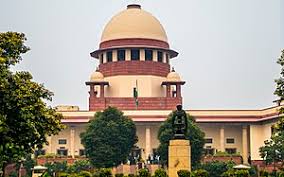
Distinguished legal luminaries, Senior Advocates Dushyant Dave and Rajeev Dhavan, presented their
insightful perspectives in the hallowed chambers of the Supreme Court on a momentous Wednesday.
The focal point of their argument was the venerable Article 370, a constitutional provision that once
bestowed distinctive status upon the picturesque region of Jammu and Kashmir. However, they
advocated a viewpoint that diverged from the common narrative, seeing Article 370 not as a mere relic
of the past but rather as an embodiment of exquisite statesmanship crafted within the Indian
Constitution’s framework.
Engaging with a Constitution Bench led by the eminent Chief Justice of India, D.Y. Chandrachud, Mr.
Dhavan cogently emphasized that Article 370, prior to its abrogation in August 2019, stood as an integral
pillar of the complex edifice of multi-symmetrical federalism characterizing our nation. An astute
observation that cast the spotlight on the intricate balance of power that lay at the heart of India’s
constitutional ethos.
̎Mr. Dhavan further illuminated his stance by highlighting a critical juncture in the saga of Article 370. He
articulated that the abrogation, in its essence, required the concurrence of the State government, an
assertion that reverberated with the principles of democratic governance. He opined that the mantle of
change could not be unilaterally assumed, especially when the erstwhile state of Jammu and Kashmir
was under the stewardship of the President’s rule.
This legal discourse then delved into the sphere of sovereignty. The learned Chief Justice and his august
Bench remarked on the absoluteness of Jammu and Kashmir’s integration with India post its princely
state accession in 1947. The sanctity of Article 370, which once conferred special status upon the region,
was held under scrutiny. The venerable five-judge Bench, including the sagacious minds of Justices
Sanjay Kishan Kaul, Sanjiv Khanna, B.R. Gavai, and Surya Kant, collectively deliberated on whether the
permanence of Article 370 was indeed etched in stone.
With a masterful grasp of constitutional intricacies, the Bench referred to the foundational Article 1 of
the Constitution, which unambiguously declares India as a union of States. Inclusion of Jammu and
Kashmir within this constitutional framework signaled the culmination of a sovereignty transfer,
rendering the essence of the accession absolutely complete. The tenets of unity were firmly upheld as
the Bench skillfully navigated the nuanced landscape of Indian federalism.
And thus, a journey through Schedule 1 of the Indian Constitution was undertaken—a catalogue
delineating the territorial contours of various states and union territories. In this comprehensive
document, Jammu and Kashmir found its honorable mention. The Bench meticulously scrutinized the
annals of history to ascertain whether remnants of sovereignty were preserved within the realm of
Jammu and Kashmir subsequent to Article 370’s enactment.
This profoundly meaningful legal engagement found its origins in several petitions, all fervently
challenging the abrogation of Article 370 and the consequential Jammu and Kashmir Reorganisation Act
of 2019. These transformative legislative moves precipitated the division of the erstwhile state into the
distinct Union Territories of Jammu and Kashmir, and the serene land of Ladakh. In a decisive step, the
matters were referred to a Constitution Bench in the year 2019—a precursor to the enthralling legal
discourse that unfolded within the chambers of justice.
In conclusion, the very contours of constitutional history were redefined as two eminent legal minds
championed their perspectives within the venerable precincts of the Supreme Court. This riveting
debate served as a poignant reminder that the tapestry of law is ever-evolving, intricately woven with
threads of vision, statesmanship, and the profound pursuit of justice.
∎